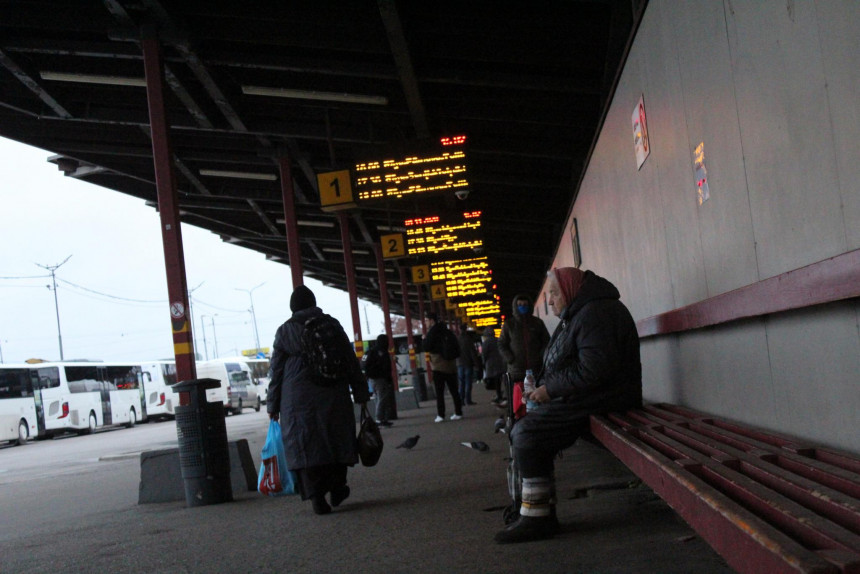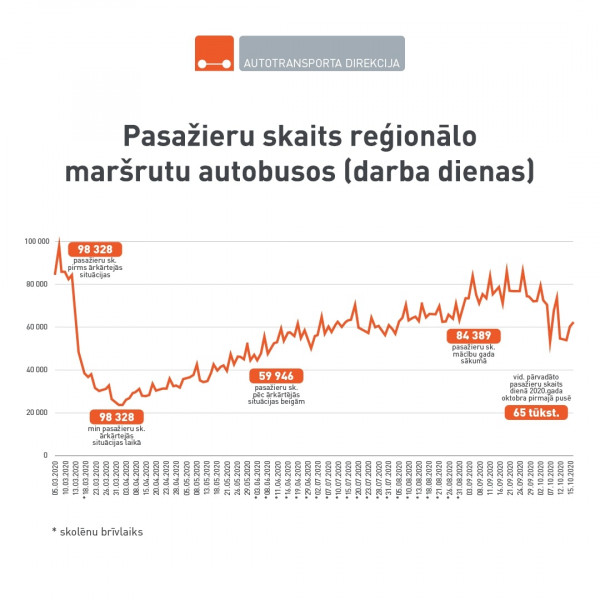Bus transport could come to an end at any moment

Such warnings have sounded at the beginning of every November for some twenty-odd years and have not come to fruition so far. This year is no exception in the sense that new circumstances have emerged once again which make the situation seem more serious than ever.
Firstly, the hallmark of 2020 is, and will remain for many years, Covid-19, which had at least for a moment reduced the number of bus passengers four times. Of course, these people did not die, but were just forced to sit at home because of the state of emergency imposed by the government, which they more or less continue to do after the end of the emergency. The volume of passenger traffic still has not returned to the pre-crisis level and does not provide passenger carriers with the same ticket revenues as planned at the beginning of the year. Secondly, public procurements and the resulting subsidies for most bus companies end on 31 December this year. The state's intention to replace these carriers with different carriers will not be fulfilled by 1 January, so the current carriers, and thus their passengers, have received verbal promises that nothing will change on 1 January and indefinitely thereafter. Unfortunately, such promises can’t be shown to banks that were previously willing to cover the losses of passenger carriers until the carriers received money from the state.
Public transport becomes a third more expensive
An invoice of EUR 18.7 million for Covid-19 and other additional costs for the continuation of passenger trains and buses is not issued to passengers, but to all taxpayers, regardless of how much they use public transport or even not at all.
This year's state budget provides for a total of 61.6 million euros to subsidize public transport. Of this, EUR 38.85 million would go to bus passenger companies for journeys between and around cities, EUR 12.49 million to large cities for bus routes outside these cities and EUR 10.26 million to the state-owned company Pasažieru vilciens (PV). Less than two months before the end of the year, it has become clear that at least another EUR 18.7 million will be needed. Of this, EUR 11.63 million would be for intercity and suburban buses and EUR 6.54 million for PV, but no additional money would be needed for large cities. All this was calculated and handed over to higher authorities in mid-September by the Road Transport Administration (RTA). Its calculations rested in the Ministry of Transport until the end of October, which seemed to be afraid to show the Ministry of Finance and the government the next demand for money after several previous ones. According to those, almost 300 million euros were allocated to airBaltic and more than 100 million to Latvijas dzelzceļš, but the last request for 87 million euros for the purchase of new passenger diesel trains was (for now?) rejected. As a result, the Minister of Transport Tālis Linkaits tried to convince the Minister of Finance Jānis Reirs and the Prime Minister Krišjānis Kariņš about the purchase of trains with a letter to the whole society. A variant of such an action algorithm is also used to request additional grants for public transport. It was only at the eleventh hour - when the number of public transport passengers and ticket revenues started to fall again in the second half of October - that RTA disclosed this reduction curve and the Ministry of Transport dared to ask for a relatively small amount of money.
The required increase in subsidies for passenger transport is very small in relation to the increase in total public expenditure. The formally valid national budget for 2020 forces the government to stay within a budget deficit of 107 million euros, but it is now known that the real deficit will exceed 2.1 billion euros. In other words, it will exceed the planned deficit by EUR 2 billion or 20 times. Additional expenditure on public transport would account for only 1/114 of the increase in the total deficit. However, this year, too, the annual ritual is performed, in which the RTA calculates, the Ministry of Transport asks, the Ministry of Finance recalculates and denies, but the government is assigned a saving role, which will eventually decide to increase funding. Yesterday, the Ministry of Transport replied to Neatkarīgā that "in co-operation with the Ministry of Finance, work is continuing to identify sources of funding and prepare appropriate documents to bring the issue of passenger transport subsidies to the Cabinet of Ministers". "The issue is in the process of coordination," the Ministry of Finance confirmed.
How irreversibly do passenger habits change?
The increase in expenditure turned out to be even smaller than expected during the Covid-19 response. Neatkarīgā started this year with a warning that, according to the calculations of the President of the Latvian Passenger Transport Association (Latvijas Pasažieru pārvadātāju asociācija) Ivo Ošenieks, "the volume of transportation ordered by the state this year will require at least 10 million euros more than entered in the budget law" (in Latvian). What he said began to come true quite unexpectedly in the middle of the year, when the state paid a total of three million euros to bus passenger transport as compensation for the ticket money not received due to Covid-19. Now I. Ošenieks confirmed to Neatkarīgā that with 3 + 11.7 million euros bus companies have be enough to maintain transportation until January 1, if the money is received in the near future.

The RTA requirement of 18.7 million was estimated in mid-September, when passenger numbers approached pre-crisis levels. Carriers started this year with more than 98 thousand bus passengers a day. The emergency measures reduced the number of passengers to 24 thousand per day at the end of March, after which the number of passengers gradually increased to almost 90 thousand, at least on some days in September and October. However, in the second half of October, firstly, passenger numbers fluctuated in a much larger range and, secondly, the average increase in the curve turned into a decrease. "In the spring, buses ran empty on some of the trips, so we were able to close those, but at the moment there is no single trend that would reflect the passengers' travel habits. During the last two weeks, the bus load on the same trip changes every day. For example, 30 passengers were transported in one trip at the end of September, after a week their number dropped to five, in mid-October the number increased again to 20, and a week later - again decreased to five passengers. This is probably due to the fact that in many workplaces a work schedule is created and several days a week employees work remotely, but others - in person,” Gusts Ašmanis, Head of the Public Transport Department of RTA describes the situation.
PV started the year with 45.7 thousand passengers per day, reached the bottom of the crisis with 14.3 thousand passengers per day and collected almost 50 thousand passengers per day in the summer heat, but ended October with less than 40 thousand passengers per day.
The blessing in the Covid-19 disaster is that public subsidies to passenger transport companies are more important than ticket revenues. In that case, companies will be able to tolerate the loss of a large number of passengers, but they will not be manage without increasing subsidies at all.